Pancragen 20mg (10 vial kit)
Pancragen 20mg (10 vial kit)
Pancragen, a tetrapeptide bioregulator, helps regulate blood sugar, enhances pancreatic function, supports metabolic health, and offers anti-aging effects by improving the endocrine function of the pancreas and stimulating pancreatic cell differentiation. (PMID: 28509500, PMID: 23486591, PMID: 22448364)
Pancragen Research Topics:
-
Regulates Blood Sugar Levels:
Pancragen helps control blood sugar by improving the endocrine function of the pancreas, making it beneficial for managing diabetes and metabolic syndrome. (PMID: 28509500)
-
Enhances Pancreatic Function:
It stimulates the differentiation and function of pancreatic cells, supporting the health of both acinar and islet cells, which are essential for digestive enzyme production and insulin regulation. (PMID: 23486591)
-
Anti-Aging Effects:
By regulating melatonin expression and improving pancreatic function, Pancragen can mitigate age-related metabolic effects, positioning it as an anti-aging peptide for the pancreas. (PMID: 23486591)
-
Improves Metabolic Health:
Pancragen reduces the incidence and severity of metabolic syndrome, enhancing overall metabolic health and potentially improving conditions related to aging. (PMID: 22448364)
Structure
Amino Acid Sequence: Lys-Glu-Asp-Trp (KEDW)
Molecular Formula: C26H36N609 Molecular Weight: 576.25 g/mol PubChem CID: 68452887 Synonyms: SCHEMBL5491754

Source: PepDraw
Pancragen and Aging
Research on pancreatic cells shows that Pancragen stimulates the expression of some differentiation factors that control the growth of acinar and islet of Langerhans cells. The latter is responsible for insulin and glucagon [1]. Though this may not seem like an anti-aging effect, it should be clear that restoration of improved growth and differentiation is a feature of young, healthy tissues. Improving these parameters, particularly in older tissues, is fundamentally an anti-aging effect. Throughout the rest of the sections of Pancragen, additional reasons for its classification as an antiaging peptide will be manifest. In particular, its ability to change the epigenetic regulation of DNA to improve gene expression is one of the clearest indications that Pancragen can turn back the clock on DNA to promote function more in keeping with youth.
Pancragen and Metabolic Disorders
Further supporting the idea that Pancragen is an anti-aging peptide are its effects on metabolic disorders. Research shows that metabolic dysregulation in older people is at least partially caused by changes in melatonin secretion during sleep. This melatonin deficiency appears to be caused by changes in insulin levels, suggesting that loss of insulin function, both in disease and as a result of old age, may be responsible for changes in melatonin secretion, which is then responsible for some of the other symptoms of metabolic syndrome [2].
Based on the above line of thought, it stands to reason that administration of Pancragen, which helps to normalize insulin secretion, could further reduce symptoms of metabolic syndrome by normalizing melatonin secretion. This is precisely what research reveals. Administration of Pancragen decreases glucose levels but also reduces plasma concentrations of insulin as well as the insulin resistance index which are strong indications that Pancragen is having a direct effect on melatonin signaling [2].
Both exogenous and endogenous melatonin inhibit the pathophysiological mechanisms of metabolic syndrome and normalize metabolism [3]. Research shows that melatonin receptors exist in the pancreas where they serve to modulate insulin and glucagon signaling in a diurnal (daylight-sensitive) fashion [4]. There is a lot of new research focusing on how disruptions in melatonin signaling are linked to the development of type 2 diabetes and metabolic syndrome.
If melatonin affects the pancreas, then it stands to reason that there is likely a feedback mechanism by which glucagon and insulin signal to the pineal gland whether to increase or decrease melatonin release. This feedback loop exists and, in type 2 diabetes, appears to be responsible for the additional metabolic effects that arise in this version of the disease that are less common in type 1 diabetes. This would explain why Pancragen’s ability to regulate insulin secretion in the pancreas also has beneficial effects on other symptoms of metabolic syndrome.

Source: PubChem
Pancragen and Diabetes
Of course, the most obvious use for Pancragen is in the treatment of diabetes, hyperinsulinemia, and elevated blood glucose levels. Research in rhesus monkeys comparing Pancragen to glimepiride (a widely used drug for lowering blood sugar) reveals that while both compounds can reduce blood sugar levels to normal baselines, only Pancragen normalizes insulin levels and C-peptide levels [5],[6]. This would suggest that Pancragen is having a more physiologic effect, striking at the very heart of what causes elevated blood sugar and correcting the problem at a more fundamental level.
Research in old monkeys shows that Pancragen normalizes plasma insulin, C-peptide, and glucose levels within 10 days and that the effect lasts, at least partially, for as long as 3 weeks [7],[8]. This suggests that Pancragen might be useful in restoring pancreatic function in elderly individuals or maintaining it as we age. This can help to normalize the metabolic system and reduce the impact of everything from osteoporosis to dementia.
Additional research in cell cultures shows that Pancragen increases the expression of matrix metalloproteinases MMP2 and MMP9. It also increases the expression of serotonin, glycoprotein CD79alpha, and the anti-apoptotic protein MCl1 while decreasing levels of the pro-apoptotic protein p53. Additionally, levels of proliferation markers PCNA and Ki67 are increased. Vasili Ashapkin, author of the textbook DNA Methylation in Plants and collaborator with Vladimir Khavinson, points out that these findings collectively indicate that Pancragen activates the expression of signaling molecules associated with increased differentiation and functionality of pancreatic islet cells [9],[10]. These effects can only be accounted for by a broad functional mechanism such as direct alteration of DNA expression and condensation patterns. In other words, Pancragen is likely working at a very fundamental level within the DNA to alter the expression of multiple genes.
Pancragen and the Vascular System
One of the most serious consequences of diabetes is the function of small blood vessels called capillaries. Elevated glucose levels cause these capillaries to first become leak and then die off as the cells that make them up, called endothelial cells, become dysfunctional and then die. Many of the long-term consequences of diabetes like heart disease, kidney disease, erectile dysfunction, and loss of limb result from damage to and loss of capillaries.
Research on Pancragen shows that it helps to normalize the adhesion of mesenteric capillary endothelium [11]. These findings suggest that Pancragen could protect the endothelium from some of the effects of diabetes, thus helping to stave off long-term consequences of the disease.
Article Author
The above literature was researched, edited, and organized by Dr. Logan, M.D. Dr. Logan holds a doctorate from Case Western Reserve University School of Medicine and a B.S. in molecular biology.
Scientific Journal Author
Vladimir Khavinson is a Professor, resident of the European region of the International Association of Gerontology and Geriatrics; Member of the Russian and Ukrainian Academies of Medical Sciences; Main gerontologist of the Health Committee of the Government of Saint Petersburg, Russia; Director of the Saint Petersburg Institute of Bioregulation and Gerontology; Vice president of Gerontological Society of the Russian Academy of Sciences; Head of the Chair of Gerontology and Geriatrics of the North-Western State Medical University, St-Petersburg; Colonel of medical service (USSR, Russia), retired. Vladimir Khavinson is known for the discovery, experimental, and clinical studies of new classes of peptide bioregulators as well as for the development of bioregulating peptide therapy. He is engaged in studying the role of peptides in the regulation of the mechanisms of ageing. His main field of action is design, pre-clinical, and clinical studies of new peptide geroprotectors. A 40-year investigation resulted in a multitude of methods of application of peptide bioregulators to slow down the process of aging and increase human life span. Six peptide-based pharmaceuticals and 64 peptide food supplements have been introduced into clinical practice by V. Khavinson. He is an author of 196 patents (Russian and international) as well as of 775 scientific publications. His major achievements are presented in two books: “Peptides and Ageing” (NEL, 2002) and “Gerontological Aspects of Genome Peptide Regulation” (Karger AG, 2005). Vladimir Khavinson introduced the scientific specialty “Gerontology and Geriatrics” in the Russian Federation on the governmental level. Academic Council headed by V. Khavinson has oversight over 200 Ph.D. and Doctorate theses from many different countries.
Prof. Vladimir Khavinson is referenced as one of the leading scientists involved in the research and development of Pancragen. In no way is this doctor/scientist endorsing or advocating the purchase, sale, or use of this product for any reason. There is no affiliation or relationship, implied or otherwise, between Life Link Research and this doctor. The purpose of citing the doctor is to acknowledge, recognize, and credit the exhaustive research and development efforts conducted by the scientists studying this peptide.
Referenced Citations
- V. K. Khavinson et al., “Effects of pancragen on the differentiation of pancreatic cells during their ageinq,” Bull. Ex12,. Biol. Med., vol. 154, no. 4, Qp. 501-504, Feb. 2013, doi: 10.1007/s10517-013-1987-6.
- 0. V. Korkushko, V. K. Khavinson, V. B. Shatilo, I. A. AntonY.k-Sheglova, and E. V. Bondarenko, “Prospects of using pancragen for correction of metabolic disorders in elderly people,” Bull. Ex12,. Biol. Med., vol. 151, no. 4, pp. 454-456, Aug. 2011, doi: 10.1007 /s10517-011-1354-4.
- S. I. Rapoport, A. I. Molchanov, V. A. Golichenkov, 0. V. Burlakova, E. S. Suprunenko, and E. S. Savchenko, “[Metabolic syndrome and melatonin],” Klin. Med. (.Mask), vol. 91, no. 11, RP· 8-14, 2013.
- E. Peschke, I. Bahr, and E. Muhlbauer, “Melatonin and pancreatic islets: interrelationships between melatonin, insulin and glucagon,” Int. J. Mo/. Sci., vol. 14, no. 4, pp. 6981-7015, Mar. 2013, doi: 10.3390/ijms14046981.
- N. D. Goncharova. L. G. lvanova, T. E. Oganyan, A. A. Vengerin, and V. K. Khavinson, “[Correction of impaired glucose tolerance using tetrapeptide (Pancragen) in old female rhesus monkeys],” Adv. Gerontol. Usepekhi Gerontol., vol. 28, no. 3,_pp. 579- 585, 2015.
- V. K. Khavinson, M. M.-G. Gapparov, N. E. Sharanova, A. V. Vasilyev, and G. A. Ryzhak, “Study of biological activity of Lys-Glu-Asp: Trp-NH2 endogenous tetrapeptide,” Bull. Exg Biol. Med., vol. 149, no. 3, pp. 351-353, Sep 2010, doi: 10.1007/s10517-010-0944-x.
- N. D. Goncharova. L. G. lvanova, T. E. Oganian, A. A. Vengerin, and V. K. Khavinson, “[Impact of tetrapeptide pancragen on endocrine function of the pancreas in old monkeys],” Adv. Gerontol. Use_ekhi Gerontol.1 vol. 27, no. 4, op. 662- 667, 2014.
- I. M. Kvetnoi, A. P. Ryzhak, I. N. Kostyuchek, and Y. A. Tafeev, “Effect of tetrapeptide pancragene on functional morphology of the pancreas in rats with experimental diabetes mellitus,” Bull. Exe_. Biol. Med., vol. 143, no. 3, pp. 368-371, Mar. 2007, doi:10.1007/s10517-007-0114-y.
- V. K. Khavinson et al., “[Tetrapeptide stimulates functional activity of the pancreatic cells in aging).” Adv. Gerontol. Useekhi Gerontol., vol. 25, no. 4, J2p. 680-684, 2012.
- V. V. Ashapkin, N. S. Linkova, V. K. Khavinson, and B. F. Vanyushin, “Epigenetic mechanisms of peptidergic regulation of gene expression during aging of human cells,” Biochem. Biokhimiia, vol. 80, no. 3, pp. 310-322, Mar. 2015, doi: 10.1134IS0006297915030062.
- V. K. Khavinson, N. A. Gavrisheva, V. V. Malinin1 S. G. Chefu1 and E. L. Trofimov1 “Effect of pancragen on blood glucose level, capillary permeability and adhesion in rats with experimental diabetes mellitus,” Bull. Exe. Biol. Med., vol. 144, no. 4,_pp. 559-562,. Oct. 2007, doi: 10.1007ls10517-007-0377-3.
$470.00
Description
Pancragen, a tetrapeptide bioregulator, helps regulate blood sugar, enhances pancreatic function, supports metabolic health, and offers anti-aging effects by improving the endocrine function of the pancreas and stimulating pancreatic cell differentiation. (PMID: 28509500, PMID: 23486591, PMID: 22448364)
Pancragen Research Topics:
-
Regulates Blood Sugar Levels:
Pancragen helps control blood sugar by improving the endocrine function of the pancreas, making it beneficial for managing diabetes and metabolic syndrome. (PMID: 28509500) -
Enhances Pancreatic Function:
It stimulates the differentiation and function of pancreatic cells, supporting the health of both acinar and islet cells, which are essential for digestive enzyme production and insulin regulation. (PMID: 23486591) -
Anti-Aging Effects:
By regulating melatonin expression and improving pancreatic function, Pancragen can mitigate age-related metabolic effects, positioning it as an anti-aging peptide for the pancreas. (PMID: 23486591) -
Improves Metabolic Health:
Pancragen reduces the incidence and severity of metabolic syndrome, enhancing overall metabolic health and potentially improving conditions related to aging. (PMID: 22448364)
Structure
Amino Acid Sequence: Lys-Glu-Asp-Trp (KEDW)
Molecular Formula: C26H36N609 Molecular Weight: 576.25 g/mol PubChem CID: 68452887 Synonyms: SCHEMBL5491754

Source: PepDraw
Pancragen and Aging
Research on pancreatic cells shows that Pancragen stimulates the expression of some differentiation factors that control the growth of acinar and islet of Langerhans cells. The latter is responsible for insulin and glucagon [1]. Though this may not seem like an anti-aging effect, it should be clear that restoration of improved growth and differentiation is a feature of young, healthy tissues. Improving these parameters, particularly in older tissues, is fundamentally an anti-aging effect. Throughout the rest of the sections of Pancragen, additional reasons for its classification as an antiaging peptide will be manifest. In particular, its ability to change the epigenetic regulation of DNA to improve gene expression is one of the clearest indications that Pancragen can turn back the clock on DNA to promote function more in keeping with youth.
Pancragen and Metabolic Disorders
Further supporting the idea that Pancragen is an anti-aging peptide are its effects on metabolic disorders. Research shows that metabolic dysregulation in older people is at least partially caused by changes in melatonin secretion during sleep. This melatonin deficiency appears to be caused by changes in insulin levels, suggesting that loss of insulin function, both in disease and as a result of old age, may be responsible for changes in melatonin secretion, which is then responsible for some of the other symptoms of metabolic syndrome [2].
Based on the above line of thought, it stands to reason that administration of Pancragen, which helps to normalize insulin secretion, could further reduce symptoms of metabolic syndrome by normalizing melatonin secretion. This is precisely what research reveals. Administration of Pancragen decreases glucose levels but also reduces plasma concentrations of insulin as well as the insulin resistance index which are strong indications that Pancragen is having a direct effect on melatonin signaling [2].
Both exogenous and endogenous melatonin inhibit the pathophysiological mechanisms of metabolic syndrome and normalize metabolism [3]. Research shows that melatonin receptors exist in the pancreas where they serve to modulate insulin and glucagon signaling in a diurnal (daylight-sensitive) fashion [4]. There is a lot of new research focusing on how disruptions in melatonin signaling are linked to the development of type 2 diabetes and metabolic syndrome.
If melatonin affects the pancreas, then it stands to reason that there is likely a feedback mechanism by which glucagon and insulin signal to the pineal gland whether to increase or decrease melatonin release. This feedback loop exists and, in type 2 diabetes, appears to be responsible for the additional metabolic effects that arise in this version of the disease that are less common in type 1 diabetes. This would explain why Pancragen’s ability to regulate insulin secretion in the pancreas also has beneficial effects on other symptoms of metabolic syndrome.

Source: PubChem
Pancragen and Diabetes
Of course, the most obvious use for Pancragen is in the treatment of diabetes, hyperinsulinemia, and elevated blood glucose levels. Research in rhesus monkeys comparing Pancragen to glimepiride (a widely used drug for lowering blood sugar) reveals that while both compounds can reduce blood sugar levels to normal baselines, only Pancragen normalizes insulin levels and C-peptide levels [5],[6]. This would suggest that Pancragen is having a more physiologic effect, striking at the very heart of what causes elevated blood sugar and correcting the problem at a more fundamental level.
Research in old monkeys shows that Pancragen normalizes plasma insulin, C-peptide, and glucose levels within 10 days and that the effect lasts, at least partially, for as long as 3 weeks [7],[8]. This suggests that Pancragen might be useful in restoring pancreatic function in elderly individuals or maintaining it as we age. This can help to normalize the metabolic system and reduce the impact of everything from osteoporosis to dementia.
Additional research in cell cultures shows that Pancragen increases the expression of matrix metalloproteinases MMP2 and MMP9. It also increases the expression of serotonin, glycoprotein CD79alpha, and the anti-apoptotic protein MCl1 while decreasing levels of the pro-apoptotic protein p53. Additionally, levels of proliferation markers PCNA and Ki67 are increased. Vasili Ashapkin, author of the textbook DNA Methylation in Plants and collaborator with Vladimir Khavinson, points out that these findings collectively indicate that Pancragen activates the expression of signaling molecules associated with increased differentiation and functionality of pancreatic islet cells [9],[10]. These effects can only be accounted for by a broad functional mechanism such as direct alteration of DNA expression and condensation patterns. In other words, Pancragen is likely working at a very fundamental level within the DNA to alter the expression of multiple genes.
Pancragen and the Vascular System
One of the most serious consequences of diabetes is the function of small blood vessels called capillaries. Elevated glucose levels cause these capillaries to first become leak and then die off as the cells that make them up, called endothelial cells, become dysfunctional and then die. Many of the long-term consequences of diabetes like heart disease, kidney disease, erectile dysfunction, and loss of limb result from damage to and loss of capillaries.
Research on Pancragen shows that it helps to normalize the adhesion of mesenteric capillary endothelium [11]. These findings suggest that Pancragen could protect the endothelium from some of the effects of diabetes, thus helping to stave off long-term consequences of the disease.
Article Author
The above literature was researched, edited, and organized by Dr. Logan, M.D. Dr. Logan holds a doctorate from Case Western Reserve University School of Medicine and a B.S. in molecular biology.
Scientific Journal Author
Vladimir Khavinson is a Professor, resident of the European region of the International Association of Gerontology and Geriatrics; Member of the Russian and Ukrainian Academies of Medical Sciences; Main gerontologist of the Health Committee of the Government of Saint Petersburg, Russia; Director of the Saint Petersburg Institute of Bioregulation and Gerontology; Vice president of Gerontological Society of the Russian Academy of Sciences; Head of the Chair of Gerontology and Geriatrics of the North-Western State Medical University, St-Petersburg; Colonel of medical service (USSR, Russia), retired. Vladimir Khavinson is known for the discovery, experimental, and clinical studies of new classes of peptide bioregulators as well as for the development of bioregulating peptide therapy. He is engaged in studying the role of peptides in the regulation of the mechanisms of ageing. His main field of action is design, pre-clinical, and clinical studies of new peptide geroprotectors. A 40-year investigation resulted in a multitude of methods of application of peptide bioregulators to slow down the process of aging and increase human life span. Six peptide-based pharmaceuticals and 64 peptide food supplements have been introduced into clinical practice by V. Khavinson. He is an author of 196 patents (Russian and international) as well as of 775 scientific publications. His major achievements are presented in two books: “Peptides and Ageing” (NEL, 2002) and “Gerontological Aspects of Genome Peptide Regulation” (Karger AG, 2005). Vladimir Khavinson introduced the scientific specialty “Gerontology and Geriatrics” in the Russian Federation on the governmental level. Academic Council headed by V. Khavinson has oversight over 200 Ph.D. and Doctorate theses from many different countries.
Prof. Vladimir Khavinson is referenced as one of the leading scientists involved in the research and development of Pancragen. In no way is this doctor/scientist endorsing or advocating the purchase, sale, or use of this product for any reason. There is no affiliation or relationship, implied or otherwise, between Life Link Research and this doctor. The purpose of citing the doctor is to acknowledge, recognize, and credit the exhaustive research and development efforts conducted by the scientists studying this peptide.
Referenced Citations
- V. K. Khavinson et al., “Effects of pancragen on the differentiation of pancreatic cells during their ageinq,” Bull. Ex12,. Biol. Med., vol. 154, no. 4, Qp. 501-504, Feb. 2013, doi: 10.1007/s10517-013-1987-6.
- 0. V. Korkushko, V. K. Khavinson, V. B. Shatilo, I. A. AntonY.k-Sheglova, and E. V. Bondarenko, “Prospects of using pancragen for correction of metabolic disorders in elderly people,” Bull. Ex12,. Biol. Med., vol. 151, no. 4, pp. 454-456, Aug. 2011, doi: 10.1007 /s10517-011-1354-4.
- S. I. Rapoport, A. I. Molchanov, V. A. Golichenkov, 0. V. Burlakova, E. S. Suprunenko, and E. S. Savchenko, “[Metabolic syndrome and melatonin],” Klin. Med. (.Mask), vol. 91, no. 11, RP· 8-14, 2013.
- E. Peschke, I. Bahr, and E. Muhlbauer, “Melatonin and pancreatic islets: interrelationships between melatonin, insulin and glucagon,” Int. J. Mo/. Sci., vol. 14, no. 4, pp. 6981-7015, Mar. 2013, doi: 10.3390/ijms14046981.
- N. D. Goncharova. L. G. lvanova, T. E. Oganyan, A. A. Vengerin, and V. K. Khavinson, “[Correction of impaired glucose tolerance using tetrapeptide (Pancragen) in old female rhesus monkeys],” Adv. Gerontol. Usepekhi Gerontol., vol. 28, no. 3,_pp. 579- 585, 2015.
- V. K. Khavinson, M. M.-G. Gapparov, N. E. Sharanova, A. V. Vasilyev, and G. A. Ryzhak, “Study of biological activity of Lys-Glu-Asp: Trp-NH2 endogenous tetrapeptide,” Bull. Exg Biol. Med., vol. 149, no. 3, pp. 351-353, Sep 2010, doi: 10.1007/s10517-010-0944-x.
- N. D. Goncharova. L. G. lvanova, T. E. Oganian, A. A. Vengerin, and V. K. Khavinson, “[Impact of tetrapeptide pancragen on endocrine function of the pancreas in old monkeys],” Adv. Gerontol. Use_ekhi Gerontol.1 vol. 27, no. 4, op. 662- 667, 2014.
- I. M. Kvetnoi, A. P. Ryzhak, I. N. Kostyuchek, and Y. A. Tafeev, “Effect of tetrapeptide pancragene on functional morphology of the pancreas in rats with experimental diabetes mellitus,” Bull. Exe_. Biol. Med., vol. 143, no. 3, pp. 368-371, Mar. 2007, doi:10.1007/s10517-007-0114-y.
- V. K. Khavinson et al., “[Tetrapeptide stimulates functional activity of the pancreatic cells in aging).” Adv. Gerontol. Useekhi Gerontol., vol. 25, no. 4, J2p. 680-684, 2012.
- V. V. Ashapkin, N. S. Linkova, V. K. Khavinson, and B. F. Vanyushin, “Epigenetic mechanisms of peptidergic regulation of gene expression during aging of human cells,” Biochem. Biokhimiia, vol. 80, no. 3, pp. 310-322, Mar. 2015, doi: 10.1134IS0006297915030062.
- V. K. Khavinson, N. A. Gavrisheva, V. V. Malinin1 S. G. Chefu1 and E. L. Trofimov1 “Effect of pancragen on blood glucose level, capillary permeability and adhesion in rats with experimental diabetes mellitus,” Bull. Exe. Biol. Med., vol. 144, no. 4,_pp. 559-562,. Oct. 2007, doi: 10.1007ls10517-007-0377-3.




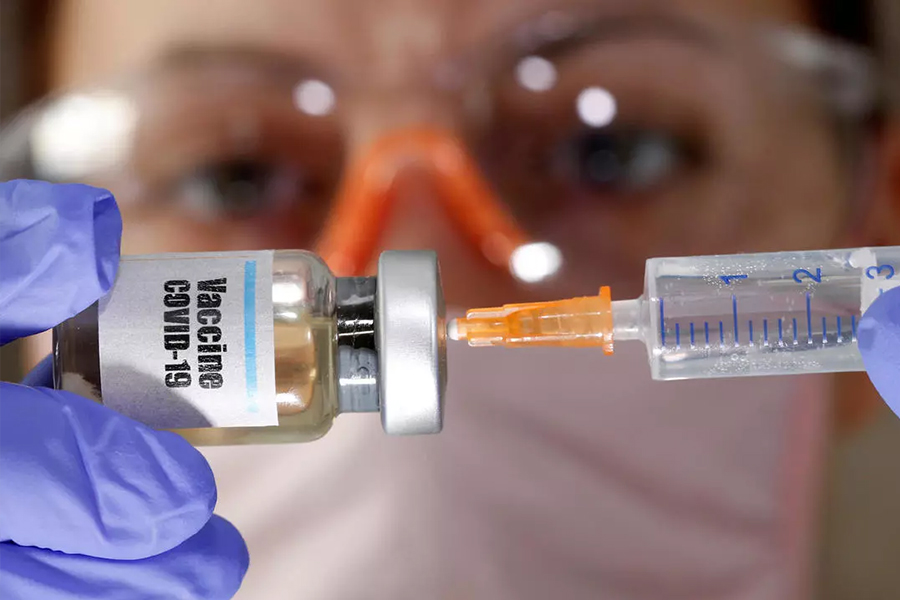

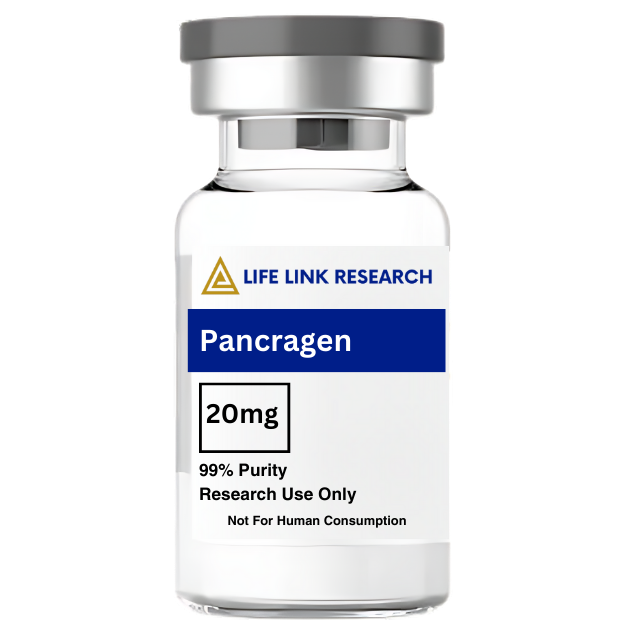
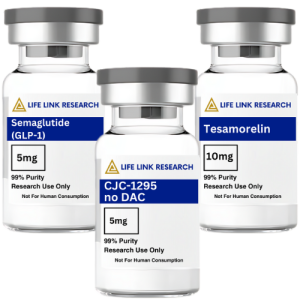
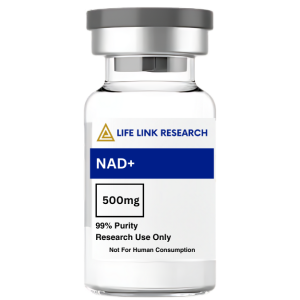
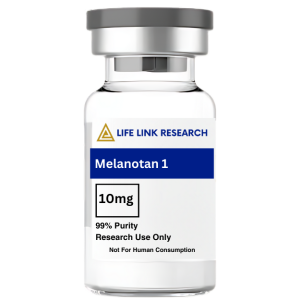
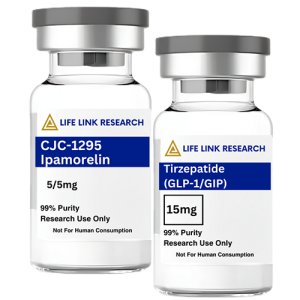
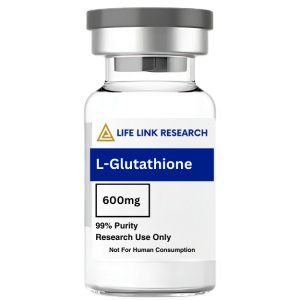
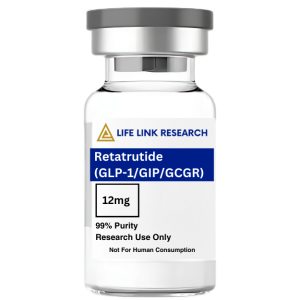


Reviews
There are no reviews yet.